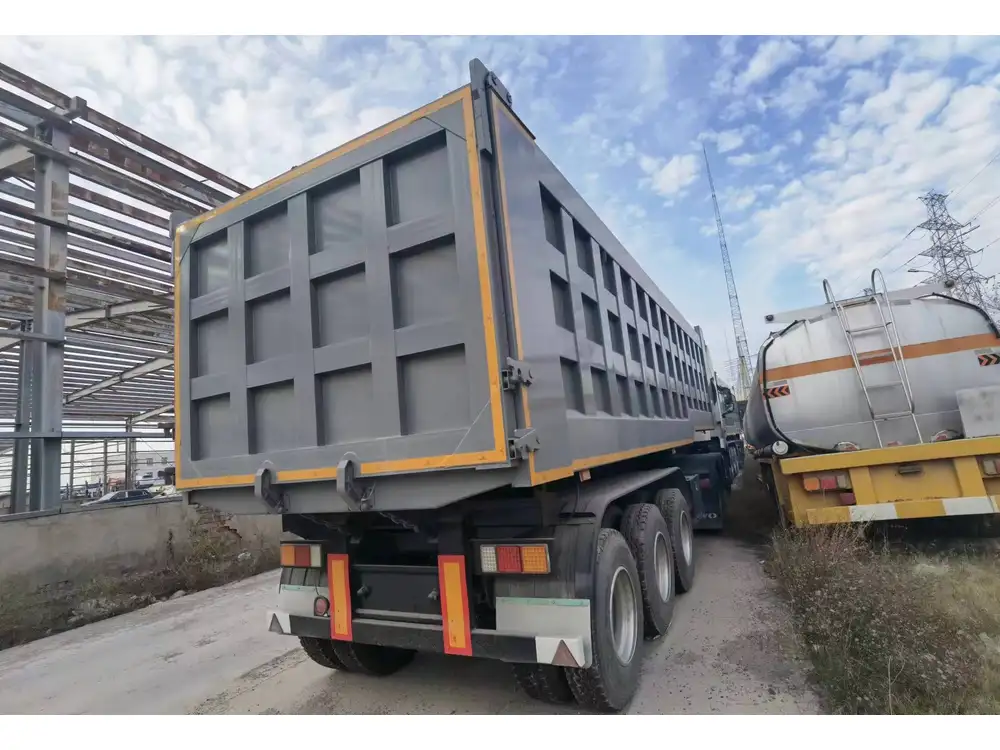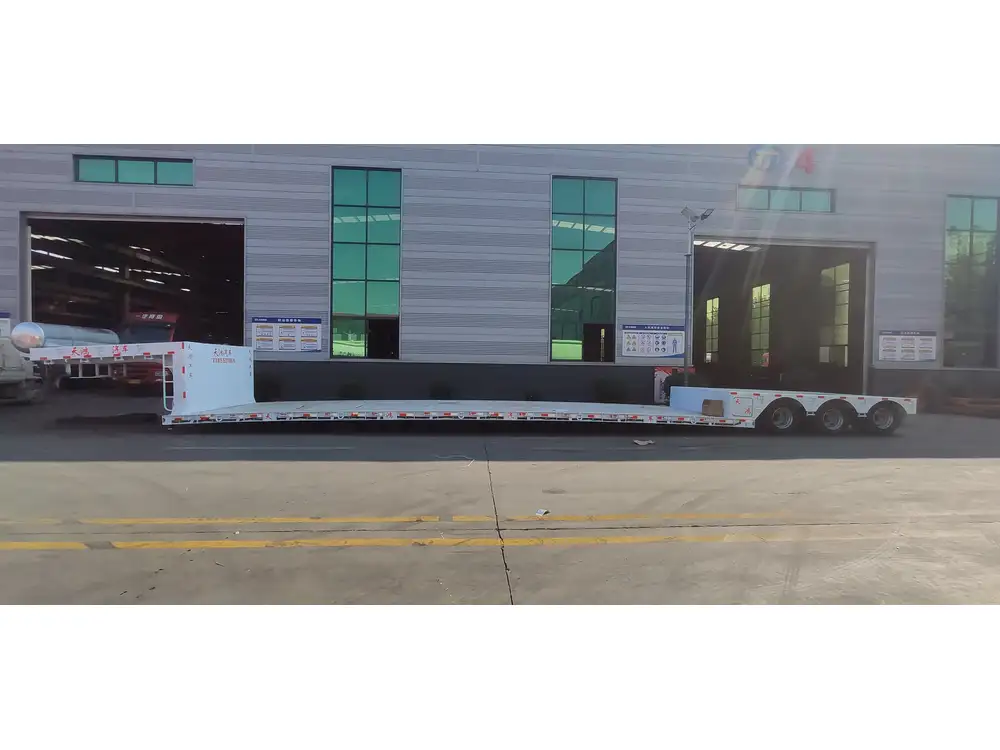Building a wooden flatbed trailer requires a blend of practical skills, material knowledge, and adherence to specific design protocols. In this guide, we will explore the step-by-step process, provide tips to simplify construction, and highlight important considerations to ensure safety and durability. By following this detailed approach, we aim to empower you with the knowledge needed to create your own high-quality wooden flatbed trailer.
Understanding the Purpose of a Wooden Flatbed Trailer
Before diving into the construction process, it’s essential to establish the intended use. Wooden flatbed trailers are typically utilized for transporting goods like lumber, machinery, or other bulky items. The design and construction approach may vary based on specific requirements:
| Use Case | Trailer Size | Load Capacity |
|---|---|---|
| Residential Moving | 5×8 feet | Up to 1,500 lbs |
| Commercial Delivery | 6×12 feet | Up to 3,000 lbs |
| Heavy Machinery | 8×20 feet | 6,000+ lbs |
Ensuring that the size and load capacity align with your needs will guide the design process.
Essential Materials and Tools

Materials List
- Lumber: Select high-quality pressure-treated wood or hardwood, such as oak or maple, for durability and resistance to wear.
- Axles: Ensure you choose the appropriate type of axle based on load requirements.
- Wheels and Tires: Opt for sturdy wheels that support the trailer’s weight.
- Fasteners: Use bolts, screws, and brackets designed for outdoor use to resist weather conditions.
- Flooring: Plywood or tongue-and-groove boards are ideal for the trailer bed.
Tools Required
- Circular Saw
- Drill and Drill Bits
- Wrenches (various sizes)
- Level
- Measuring Tape
- Safety Gear (gloves, goggles)
Step-by-Step Construction Process

Step 1: Trailer Design and Planning
Develop a comprehensive plan that includes the dimensions, weight distribution, and required features. Create a sketch or blueprint to visualize the final product. Consider the following:
- Dimensions: Adjust lengths and widths according to vehicle compatibility and load size.
- Weight Distribution: Design with appropriate axle placement to ensure balance.
- Electrical Needs: Determine if lights or other electrical features are necessary.
Step 2: Constructing the Frame
- Cut the Lumber: Adhere to your design dimensions when cutting the lumber for the trailer frame.
- Assemble the Frame: Connect the cut pieces using metal brackets and bolts. Ensure all corners are square for structural stability.
- Reinforce Joints: Use additional wood blocks at joints to enhance strength.
Step 3: Installing the Axle and Wheels
- Position the Axle: Set the axle to the designated point beneath the trailer frame. The placement should align with your design to bolster weight distribution.
- Secure the Axle: Attach using bolts and ensure it is firmly in place.
- Attach the Wheels: Fasten the wheels to the axle, ensuring they are straight and aligned before tightening completely.

Step 4: Creating the Trailer Bed
- Cut the Flooring Material: Measure and cut plywood or tongue-and-groove boards to fit the frame.
- Attach the Flooring: Securely fasten the flooring using screws. Ensure no gaps exist between boards to prevent items from slipping.
- Seal If Necessary: Apply a wood sealant to enhance durability against the elements.
Step 5: Building the Sides
- Decide on Side Height: Typically, 18-24 inches in height is sufficient for a flatbed trailer.
- Construct Side Panels: Cut additional lumber and assemble panels to create sturdy side walls.
- Attach Side Walls: Secure the side panels to the trailer frame, using support brackets to enhance stability.
Step 6: Final Touches
- Add Tailgate: If desired, construct a tailgate from lumber that can swing down or detach for easy loading and unloading.
- Install Lighting: If the trailer is used for road transport, install lights as per local regulations.
- Check for Safety: Inspect your trailer for sharp edges, faulty connections, or other potential hazards.

Step 7: Finishing the Build
- Sand Rough Edges: Use sandpaper to smooth out any sharp edges that remain.
- Paint or Stain: Apply a weatherproof paint or stain for protection against the elements, enhancing both appearance and lifespan.
Safety Considerations and Compliance
Weight Limits
Ensure that the trailer adheres to the weight limits set by local transportation laws. Overloading can compromise safety and lead to legal consequences.

Road Regulations
- Lights and Reflectors: Make sure your trailer complies with local road safety regulations regarding lights and reflective materials.
- Towing Capacity: Verify that your towing vehicle can handle the weight and dimensions of your finished trailer.
Maintenance Tips for Longevity
To ensure your wooden flatbed trailer remains in prime condition, consider establishing a maintenance routine:
| Maintenance Task | Frequency | Purpose |
|---|---|---|
| Inspect the frame and axles | Monthly | Check for wear or damage |
| Tighten loose fasteners | Monthly | Prevent structural issues |
| Reapply sealant/stain | Annually | Protect wood from weather |
Common Challenges and Solutions

Challenge 1: Wood Warping
Solution: Use high-quality pressure-treated wood specifically designed for outdoor use. Store wood in a dry area and avoid excessive moisture during the construction phase.
Challenge 2: Weight Distribution Issues
Solution: Prior to constructing the trailer, carefully plan axle placement, and distribute heavy items evenly during loading.
Challenge 3: Legal Compliance
Solution: Familiarize yourself with local towing regulations. Consult local authorities or online resources for requirements concerning size, weight, and safety features.

Conclusion
Building your own wooden flatbed trailer is not just a rewarding project; it also helps tailor a utility solution to your specific needs. This guide equips you with the knowledge needed to navigate the entire construction process, from design to maintenance. Engaging in meticulous planning and execution ensures that the trailer not only serves its purpose but also stands the test of time and usage frequency. By adhering to safety practices and considering local regulations, you pave the way for successful transport solutions, offering peace of mind alongside tangible results.
With this thorough approach, whether serving personal or professional needs, your handcrafted wooden flatbed trailer will undoubtedly meet the rigors of transportation while showcasing your craftsmanship. Happy building!



